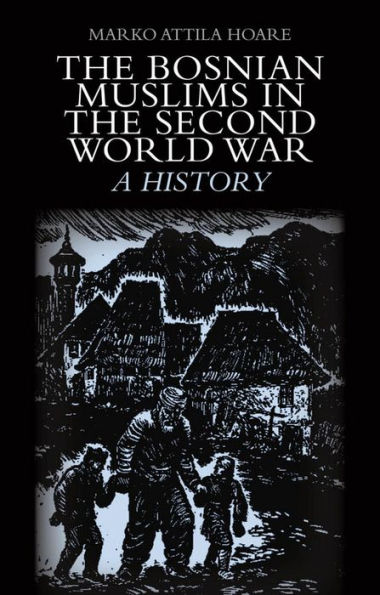5
1


Hardcover
$128.50
-
PICK UP IN STORECheck Availability at Nearby Stores
Available within 2 business hours
Related collections and offers
128.5
In Stock
Overview
The story of the Bosnian Muslims in World War II is an epic frequently alluded to in discussions of the 1990s Balkan conflicts, but almost as frequently misunderstood or falsified. This first comprehensive study of the topic in any language sets the record straight. Based on extensive research in the archives of Bosnia- Herzegovina, Serbia and Croatia, it traces the history of Bosnia and its Muslims from the Nazi German and Fascist Italian occupation of Yugoslavia in 1941, through the years of the Yugoslav civil war, and up to the seizure of power by the Communists and their establishment of a new Yugoslav state. The book explores the reasons for Muslim opposition to the new order established by the Nazis and Fascists in Bosnia in 1941 and the different forms this opposition took. It de- scribes how the Yugoslav Communists were able to harness part of this Muslim opposition to support their own resistance movement and revolutionary bid for power. This Muslim element in the Communists' revolution shaped its form and outcome, but ultimately had itself to be curbed as the victorious Communists consolidated their dictatorship. In doing so, they set the scene for future struggles over Yugoslavia's Muslim question.

Product Details
| ISBN-13: | 9780199327850 |
|---|---|
| Publisher: | Oxford University Press |
| Publication date: | 02/01/2014 |
| Pages: | 544 |
| Product dimensions: | 6.00(w) x 9.50(h) x 1.30(d) |
| Age Range: | 18 Years |
About the Author
Marko Attila Hoare is a Reader in history at Kingston University. He has been researching the history of the former Yugoslavia since the early 1990s.
Table of Contents
Introduction: The Muslim Road to the Communist Triumph in Yugoslavia1. The dual Bosnian resistance: c. April 1941-April 1943
The Axis, the NDH and Bosnia-Hercegovina
The Serb uprising and the birth of the Bosnian Partisan movement
The origins of Muslim and Croat resistance
The KPJ and the Bosnian Muslims
The KPJ and the Bosnian Croats
The Muslim autonomist opposition
The Muslim National Military-Chetnik Organisation
The Muslim Memorandum to Hitler
The 13th SS Division 'Handschar'
Beginnings of a synthesis
2. The People's Liberation Movement underground: c. April 1941-April 1943
The importance of personal connections
The Ustasha-Communist overlap
The limits of Ustasha repression
Women in the NOP
The resistance in Sarajevo
The resistance in Banja Luka
Enemy infiltration of the NOP
The NOP and the Home Guard
3. The Muslim and Croat rebellion: c. April 1941-October 1943
The Chetnik 'March on Bosnia' and Muslim alienation from the Axis
The Nazi turn towards the Great Serbs
The 13th SS Division 'Handschar' as a catalyst to the Muslim revolt
The 16th Muslim Brigade
The revolt of the Muslim Legions and Home Guards
The first liberation of Tuzla
The rebellion of the Muslim notables
The rebellion beyond East Bosnia
The Muslim Liberation Movement
4. Bosnian assembly and Yugoslav federation: c. October 1943-April 1944
Tito censures the Bosnian leadership
The road to ZAVNOBiH
Republic or autonomous province?
The launch of the First Session of ZAVNOBiH
The speeches and actions of the First Session of ZAVNOBiH
Jajce: the Yugoslav Partisan capital
The Second Session of AVNOJ
Popularising the Bosnian parliament
Enemy responses to the Bosnian Partisan successes
5. Bosnian statehood and Partisan diversity: c. November 1943-April 1945
Expansion of the People's Liberation Movement
The Yugoslav road to Bosnian statehood
The Second Session of ZAVNOBiH
The problem of an expanding base
'Feminist errors'
The reconquest of Hercegovina
The 18th Croat Brigade
Huska Miljković and the Una Operational Group
6. The liberation of Bosnia and Yugoslavia: c. April 1944-April 1945
The Independent State of Croatia crumbles
Liberating the towns from without and within
The battle for Banja Luka
The collapse of the Handschar Division
The liberation of Serbia
The liberation of Mostar
Sarajevo on the eve of liberation
The liberation of Zenica
7. Constructing a Bosnian nation-state: c. July 1944-December 1946
Organising the Bosnian state
The territorial organisation of Bosnia-Hercegovina
The Third Session of ZAVNOBiH
Serb unity vs Bosnian sovereignty
The Constituent Assembly of Yugoslavia
Did Bosnia-Hercegovina have the right to secede from Yugoslavia?
The Bosnian Constituent Assembly opens
The Bosnian coat of arms and flag
The Bosnian constitution is promulgated
8. Bosnia and the Muslims after liberation: c. April 1945-September 1950
The Communists besieged from below
The Republic and the army
The colonisation of Vojvodina
The Polish and Ukrainian minorities
The Communists and Christianity
The Muslim national identity and the Communist dilemma
Muslim pressure for national recognition
The Zulfikarpassi? affair
Women as the vanguard
Thermidor of the Muslims
From the B&N Reads Blog
Page 1 of
